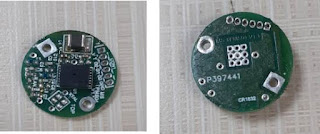4 Things to Know About IGBT Based Power Semiconductors
IGBT-based
power semiconductors form an integral part of a wide range of electrical
applications. However, what are IGBT-based power semiconductors, their
applications, and how efficient are IGBT-based power semiconductors compared to
MOFSET? Millennium Semiconductors, one of the leading IGBT power module
distributors, talks about these vital aspects for a better understanding of
IGBT-based power semiconductors.
What are IGBT-Based Power Semiconductors?
A
power semiconductor controls or switches current in electrical circuits. It
includes the power metal-oxide-semiconductor field-effect transistor (MOSFET),
Bipolar Junction Transistor (BJT), power diode, Thyristor, and an Insulated
Bipolar Transistor (IGBT). So, an IGBT integrates a Bipolar Junction Transistor
(BJT) and metal-oxide-semiconductor field-effect transistor (MOSFET). Let us
now look at the uses of IGBT-based power semiconductors.
What are the Uses of IGBT-Based Power Semiconductors?
As
per industry experts, IGBT provides better thermal performance efficiency.
Hence, it is widely used in electronic products and power electronics
applications, including power supplies and converters, due to its switching
speed.
IGBT-based
power semiconductors are used in consumer devices, industrial applications, and
automobiles. Additionally, their adoption is increasingly seen in IGBTs with
three-phase high output motor control inverters in EVs/ HEVs, resonance
circuits for home appliances, and boost control in industrial power and
supplies and UPS. But then, IGBT-based power semiconductor vs. MOFSET, which
one’s better? Let us find out the answer.
IGBT-Based Power Semiconductor Vs. MOSFET
Semiconductors
and MOSFET have a similar gate structure
(metal-oxide-semiconductor type). Hence, usually, IGBT-based power
semiconductor’s gate-drive needs are similar to current rated power and
comparable voltage MOSFET. Nevertheless, some of the vital differences between
IGBT-based power semiconductor and MOFSET, as per their gate drive requirements
include,
- IGBTs have a higher threshold gate-emitter voltage, needed to maintain the semiconductor device in saturation at the given collector current. Hence, the VGE should be a minimum of 15 V. But in the case of MOFSETs, a VGS of 10 V is enough to maintain saturation across current and temperature.
- IGBT-based power semiconductor has a lower gate-emitter capacitance than similarly-rated MOFSET. Hence, IGBTs series gate turn-on resistor value is always preferred to be higher, which minimizes the potential for the resultant and ringing EMI and restricts the turn-on dt/dv.
Is it Possible to Parallel an IGBT-Based Power Semiconductor?
Yes.
It is possible to parallel an IGBT-based power semiconductor if you take the
following precautionary measures.
- The device must be fixed on common heat copper/ sink substrate.
- The gate-drive layout for every paralleled IGBT is symmetrical.
- A matching and individual 2 to 4 Ω resistor must be placed in series with every gate of the device to reduce the chance of potential gate-voltage oscillations in one semiconductor device, coupling in other.
- With respect to sinking and sourcing current capacity, the gate driver is good enough to ensure fast-switching speeds.
Millennium Semiconductors – The Leading Distributor of IGBT Power Modules
Millennium
Semiconductors is a leading distributor of IGBT power modules. The company partners with a
range of electronic components and sensor manufacturers across the world.
Additionally, the company’s distribution network and capabilities enable it to
distribute electronic components throughout the country. For more information,
connect with Millennium Semiconductors at +91 20 27484800 or
info@millenniumsemi.com.
Summary
As a
vital part of electronic devices, this blog from Millennium Semiconductors, the
top IGBT power module distributor, focuses on a few aspects of IGBT-based power
semiconductors, such as their meaning and applications and a comparison of IGBT
and MOSFET.



Comments
Post a Comment